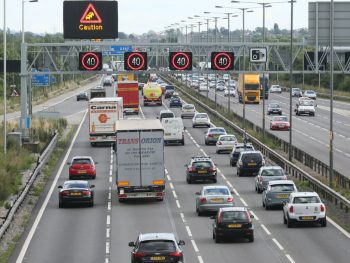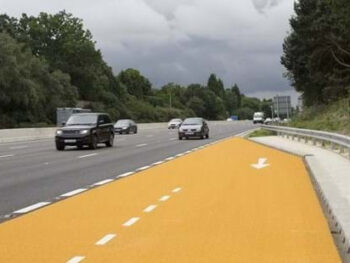Hard shoulders must be reinstated on smart motorways, says RAC
Ministers have been urged to bring back hard shoulders across the UK's 200-plus miles of smart motorways in response to ongoing concerns for road safety.

The PM cancelled the rollout of future all-lane running smart motorways a year ago due to the lack of public confidence as well as financial pressures The call comes from the RAC and coincides with the one-year anniversary of the Government closing all 14 future all-lane running (ALR) smart motorway schemes. The first 'smart' motorway section went live in 2006 on the M42, using a 'dynamic hard shoulder' opened up to traffic at busy times.
However, the first all-lane running smart motorway - with the hard shoulder permanently converted - opened on a 1.5-mile stretch of the M25 in Hertfordshire on 14 April 2014. Around 10% of England's motorway network is made up of smart motorways - including dynamic hard shoulder and ALR schemes. Prime Minister Rishi Sunak cancelled the rollout of future all-lane running smart motorways on 15 April 2024 in response to the lack of public confidence as well as financial pressures.
The construction of smart motorways had already been put on hold in January 2022[1] to gather more safety data on their operation after a damning report by the Transport Committee[2]. Initial estimations suggested constructing future smart motorway schemes would have cost more than GBP1bn - and the Government said cancelling these schemes would allow more time to track public confidence in smart motorways over a longer period. RAC head of policy Simon Williams said: "There is a real irony when it comes to talking about cost pressures in relation to these distinctly unpopular types of motorway.
While heralded as a cost-effective way of increasing capacity on some of our busier roads, a colossal amount of public money has since gone into trying to make them safer - for instance by installing radar-based technology to detect stricken vehicles more quickly, plus the creation of additional emergency refuge areas. This cash needn't have been spent had the Government not taken the decision to plough on with building all-lane running motorways, regardless of concerns expressed by drivers, the RAC and even the Transport Committee." The RAC said that the ultimate question was whether the motoring public would ever be entirely comfortable driving on the 200-plus miles of motorway where the hard shoulder has been permanently removed.
"The hard shoulder is by no means a safe location, but in the event of a breakdown, it is far safer than being stranded in a live lane of traffic waiting for the 'red X closed lane' sign to be turned on and then for other drivers to do the right thing and move into another lane.
In June 2016, a Transport Committee report advised the Government that it should not proceed with all-lane-running schemes[3], citing "major safety concerns". RAC research released in April 2023 showed seven in 10 drivers (69%) wanted the hard shoulder to be reinstated on existing all-lane running smart motorways, regardless of the Government claiming it would be too disruptive and costly. Separate RAC research released in December 2022 showed half of drivers (49%) said they frequently or occasionally avoid using lane one on all-lane-running smart motorways, and three-quarters (77%) of these said they were worried they might encounter a stationary, broken-down vehicle as there is no hard shoulder.
A Department for Transport spokesperson said: "While smart motorways are statistically among the safest roads on our network, we recognise the need for the public to feel safe when driving, and have cancelled plans for all new smart motorway schemes. "We are also investing GBP900m to make improvements on existing smart motorways, including building more emergency areas on these roads."
Existing smart motorways to get 52 new emergency areas

National Highways is rolling out 52 further emergency refuge areas on smart motorways in the south east. Image credit: National Highways
National Highways has announced that it's continuing the rollout of further emergency refuge areas (ERAs) on smart motorways in the south east, following the Government's "stocktake" and smart motorway action plan[4] in 2020. The rollout includes 24 ERAs on the M25 in Surrey, Kent, Hertfordshire and Essex as well as new emergency areas on the M20, M27, M4 and M3. They are marked by blue signs featuring an orange SOS telephone symbol.
Each is coloured orange and is around the same length as a football pitch.
Felicity Clayton from National Highways said: "Safety is our highest priority and we have listened to drivers' concerns about having more places to stop in an emergency on motorways which don't have a permanent hard shoulder.
"This is part of the Government's GBP900m investment in further safety improvements on existing smart motorways, which includes adding an additional 150 emergency areas across the network and giving motorists clear advice when using smart motorways to boost public confidence."
References
- ^ had already been put on hold in January 2022 (fleetworld.co.uk)
- ^ damning report by the Transport Committee (publications.parliament.uk)
- ^ Transport Committee report advised the Government that it should not proceed with all-lane-running schemes (fleetworld.co.uk)
- ^ action plan (www.gov.uk)